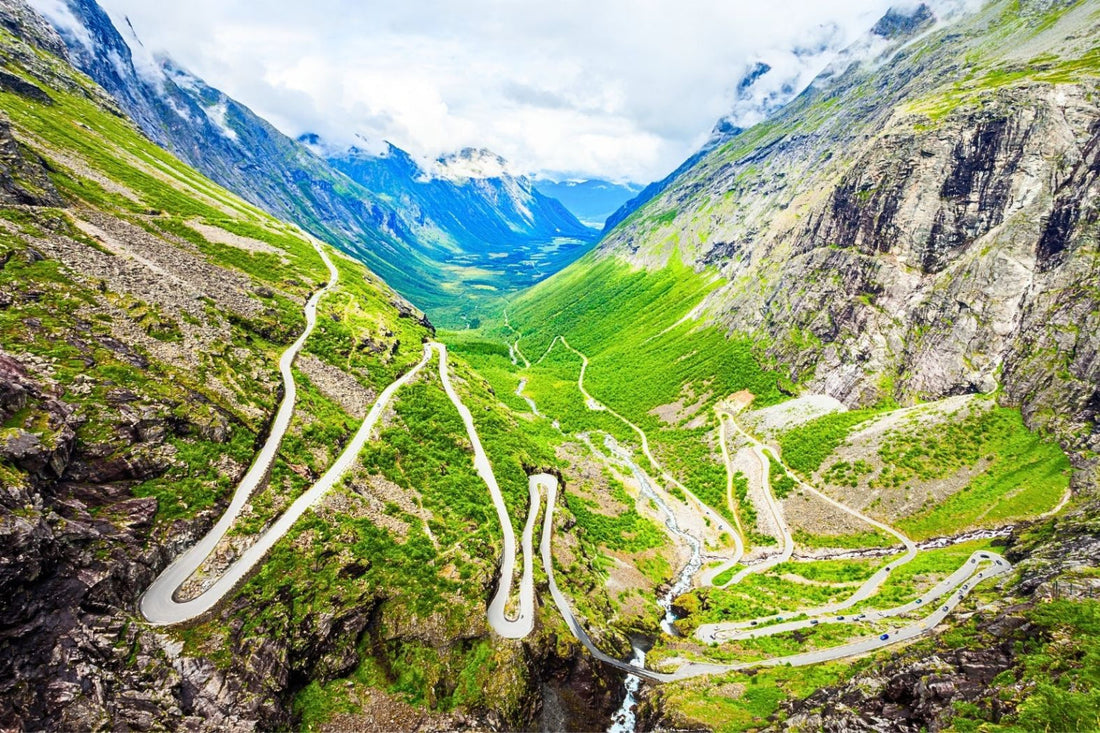
Norway on a Budget for Motorcycle Riders: Ferries, Tolls, Fuel & Camping Tips
Share
Planning a Norway moto trip without torching your wallet? This guide distills the money-savers that actually matter to riders: how to handle tolls & ferries, what fuel costs to expect, where to camp legally and cheaply, and the small logistics that add up over thousands of kilometers.
Road Tolls: what riders really pay (and don’t)
Motorcycles are not charged at Norway’s automatic toll stations. Foreign bikes are recognized by plate and billed NOK 0 by the central toll processor (no tag required). If you get an invoice, it should be 0 NOK. Source: Epass24’s official guidance for foreign vehicles.
Do you need an AutoPASS tag? No—for bikes it won’t reduce a toll that’s already zero. (Some private roads/parking may still charge motorcycles—signs at the gate will make that clear.)
If you drive a support van: sign it up with Epass24 or an AutoPASS tag for standard discounts and to avoid admin surcharges.

Ferries without overpaying
Norway uses two parallel systems riders should know:
AutoPASS for ferries / FerryPay
Most ferries accept AutoPASS (the same transponder used on toll roads) or FerryPay (plate recognition linked to a bank card). Both are pay-as-you-go and rider-friendly—no queuing at the ticket window.
If you already have an AutoPASS tag from a car, it will work on most ferries; otherwise FerryPay is the simplest for visiting riders (register plate + card; charges happen automatically).
When to book
Popular long hops (e.g., Bodø–Moskenes to Lofoten) can book out at peak times; departures may be limited and a reservation helps avoid roll-over queues. (Anecdotal but common experience among travelers.)
Money-savvy ferry tips
Ride up front in the queue area for motorcycles when marshals indicate—bikes are often slotted efficiently. (Space-saving works in your favor.)
Off-peak sailings (early/late) are easier to board and can be cheaper on some routes.
Keep your side stand puck handy; car decks can be slick.
Fuel prices & range planning
As of recent data, unleaded (95) averages about €1.75/L and diesel €1.67/L nationwide (prices fluctuate by week and region; fjord & remote areas usually run higher).
Save on fuel
Fill up in larger towns before scenic detours.
Many stations are card-only automats after hours—carry a physical card with PIN.
Norway’s tight twisties reward smooth throttle; plan legs by time, not distance (250–350 km days feel full on coastal & mountain roads).

Wild camping, campsites & shelters (how to keep it legal and free)
Norway’s Right to Roam (Allemannsretten) allows excellent low-cost overnights if you follow the rules:
Tent at least 150 m from the nearest house/cabin.
Up to 2 nights in the same spot on cultivated land (longer stays OK in the high mountains/uncultivated areas, unless signed otherwise).
Respect local campfire bans (typically Apr 15 – Sep 15) in or near forests/fields. Leave no trace.
Budget lodging ladder
Wild camp (free, rule-compliant).
Hytte (cabins) at campgrounds—often cheaper than hotels if two riders share.
DNT cabins (Norwegian Trekking Association) near some routes—simple, scenic, and affordable for members.
City hostels only when you need laundry/reset.
Ferries vs. bridges vs. scenic detours (cost calculus)
Many famous moto roads (e.g., Trollstigen, Atlantic Road) are free to ride—they’re part of Norway’s National Tourist Routes program; your cost is only fuel + any ferry links you choose to include.
When a loop offers bridge vs. ferry, the bridge is typically faster/cheaper; choose ferries when they make the route (Lofoten access, Hardangerfjord crossings, etc.).
Small costs that become big costs (and how to reduce them)
Food: supermarket chains (Rema 1000, Kiwi, Coop Prix) beat cafés by a mile; grab hot case bites + picnic by the fjord.
Coffee & water: fuel stations often sell refill deals; carry a filter bottle for mountain streams where safe.
Laundry: coin-op machines at many campgrounds—plan a wash every 3–4 days instead of booking a hotel “just for laundry.”
Weather tax: waterproofs, warm mid-layer, and glove strategy (summer / waterproof / thin liner) prevent emergency gear buys.

Documents, fines & rider-specific realities
Docs to carry: passport, motorcycle registration, Green Card insurance.
Speed enforcement is strict and fines are high—budget time, not speed, to keep costs (and stress) down.
Card payments dominate—keep one backup card. Cash is rarely essential.
Sample daily budget (solo rider, tenting most nights)
Fuel €45–70 (250–350 km), Food €15–25 (self-cater), Camping €0–25 (wild vs. campground), Ferries €0–30 (route-dependent), Misc €5–10 → ~€65–135/day.
Add 30–50% if you cabin-hop or eat out frequently.
Want all the logistics pre-sorted?
If you’d rather ride than research, my Norway – Motorcycle Tour Book & GPX Routes packs the money-savers and rider intel into a turn-key plan (13 ready-to-ride routes, two itinerary lengths, vetted campsites & food stops, and detailed daily briefs).
